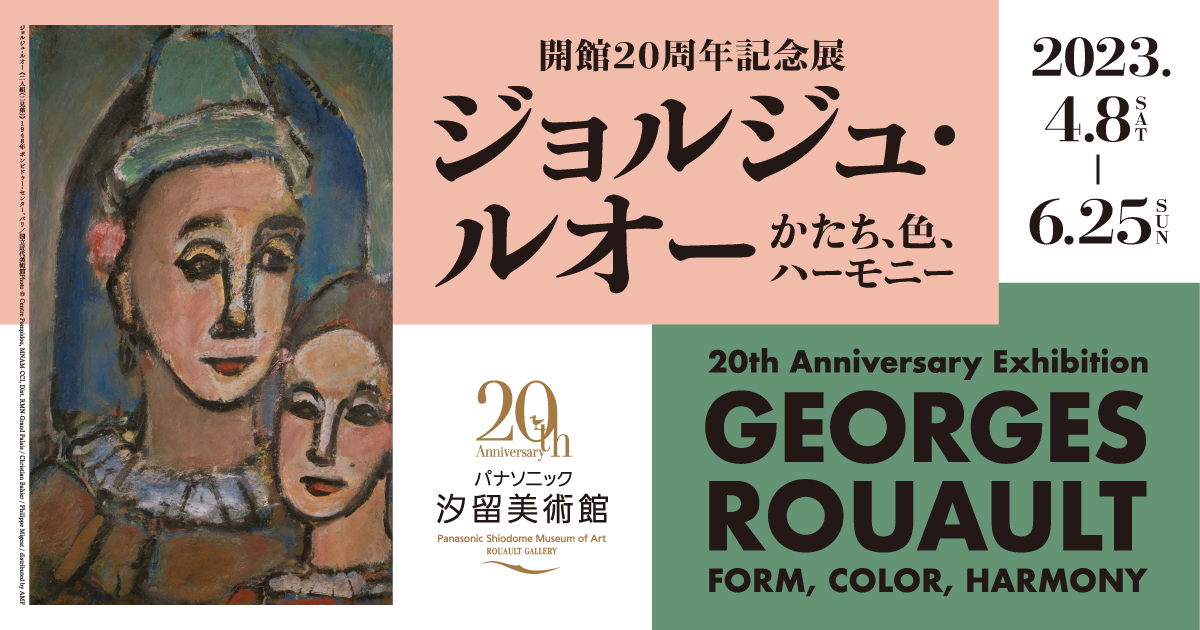20th Anniversary ExhibitionGeorges Rouault: Form, Color, HarmonyClosed

Timed-entry reservations are required for visits on weekends and holidays.
All advance reservations are no longer accepted.
Exhibition overview
Georges Rouault (1871–1958) was one of the most innovative French painters of the late 19th and early 20th centuries. To this day, many viewers find themselves enthralled by his depictions of religious subjects, his late-period oil paintings with their luminous colors, and his distorted yet approachable human figures. The Panasonic Shiodome Museum of Art presents this sweeping retrospective of Rouault’s career in celebration of the museum’s 20th anniversary. With a focus on “form, color, harmony”—a phrase frequently invoked by the artist to speak about his art—the exhibition explores Rouault’s decorative forms while touching on his influences, such as contemporary trends in art and society and events such as the two World Wars. The exhibition will feature an impressive approximately 70 items from museums around France and Japan. Highlights include Homo Homini Lupus (Man is a wolf to man) and The Little Sorceress, one of his later masterpieces, as well as letters and poems in the artist’s own hand. With some of the artworks being exhibited in Japan for the first time, this will be one of Japan’s most comprehensive retrospectives of Rouault to date.
- Dates
- April 8 Saturday - June 25 Sunday, 2023
- Hours
- 10 a.m. - 6 p.m. (Open until 8 p.m. on May 12, June 2, June 23, and June 24.)
Admittance until 30 minutes before closing time.
- Closed
- Wednesdays (Except for May 3 and June 21)
- Admission
- Adults: ¥1,200
Visitors aged 65 or over with valid documentation: ¥1,100
Students (High school and college): ¥700
Admission is free for children in middle school or younger. Admission is free for disability passbook holders and up to one accompanying adult.
※Admission will be ¥500 for all visitors on international Museum Day (May 18). Click here to access the discount voucher page.
- Organizers
- Panasonic Shiodome Museum of Art, NHK, NHK Promotions Inc.
- Supporter
- Ambassade de France / Institut français du Japon, Minato City Board of Education
- Cooperation
- Japan Airlines Co.,Ltd.
- Special cooperation
- Fondation Georges Rouault





